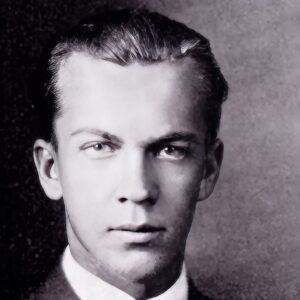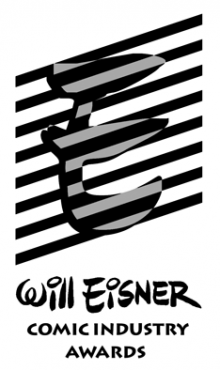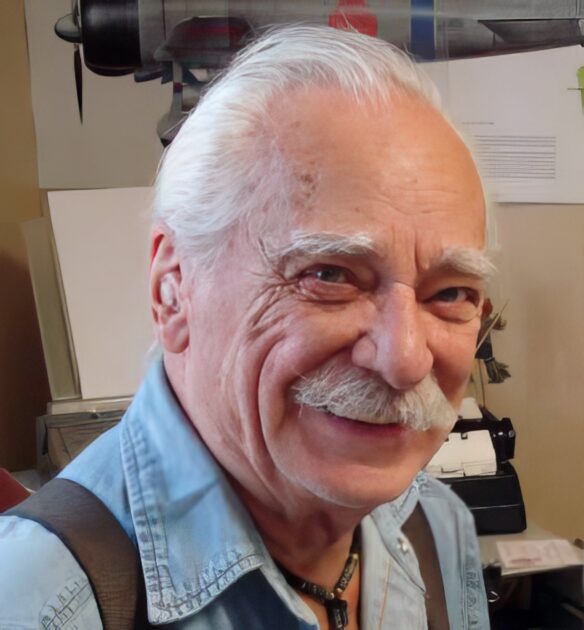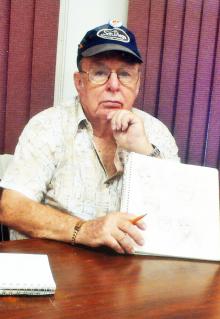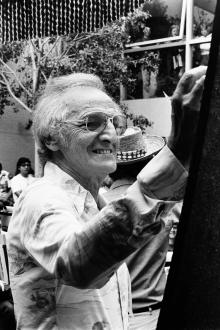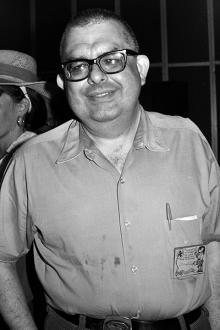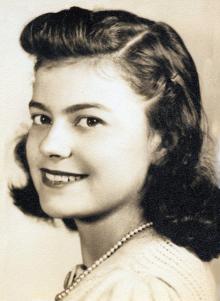Comic-Con has named six writers who have contributed greatly to the history of comics to receive the 2021 Bill Finger Award for Excellence in Comic Book Writing. The selection, made by a blue-ribbon committee chaired by writer/historian Mark Evanier, was announced June 30.
“Since we are not yet in a position to honor a writer who is still with us in a proper ceremony, we’re going to a long list of comic book writers from the past who we feel did not receive sufficient recognition or reward for their contributions to the field. As with last year, we have selected six posthumous awards and no ‘alive’ award,” Evanier explained. “Each of these six writers left us with a body of work that the judges deem worthy of this honor.”
This year’s recipient list includes two of the most prolific writers to ever work in comics—and there are several others who have received or may soon receive this award who unquestionably count among the most prolific ever. The Finger Award committee takes no position as to which of them was the most prolific. Such a determination might require records that no longer exist (or never existed), as well as distinguishing between writing the most stories and writing the most pages. “All of these writers deserve recognition,” Evanier remarked. He added, “Everyone should remember that it’s tough to determine precise totals when you’re recognizing writers who did not receive credit for most of their work or, in some cases, didn’t receive any credit at all.”
The Bill Finger Award was created in 2005 at the instigation of Finger’s friend and colleague, Jerry Robinson, who felt that Finger had received way too little credit and compensation for his work in comics, especially regarding Batman and that character’s supporting cast and mythos. As Evanier explains, “Though Bill Finger now receives a lot more recognition than he received in his lifetime, there are still so many who have not, and that’s why we keep giving out these awards.” Here are this year’s recipients, in alphabetical order.
In addition to Evanier, the Finger Award selection committee consists of Charles Kochman (executive editor at Harry N. Abrams, book publisher), comic book writer Kurt Busiek, artist/historian Jim Amash, cartoonist Scott Shaw!, and writer/editor Marv Wolfman.
This year’s recipients are, in alphabetical order:
Robert Bernstein (1919–1988)
A former high school English teacher, Robert Bernstein began writing comic books around 1945, working for, among other companies, Fox, Hillman, Harvey, and Spark, though his longest association then was with Lev Gleason. There, he joined the ranks of ghostwriters for Charles Biro on the top-selling Crime Does Not Pay and similar comics. In the 1950s, Bernstein wrote war, western, and horror scripts for Atlas (later known as Marvel) and for EC Comics, where his scripts appeared in Valor, Impact ,and M.D., among others. He is also said to have written the entirety of the short-lived EC series Psychoanalysis and to have patterned one of its recurring characters, Mark Stone, on himself and his own experiences undergoing analysis. His major account during the fifties, though, was DC Comics, where between 1952 and 1968 he wrote countless stories featuring Superman, Superboy, Supergirl, Jimmy Olsen, Lois Lane, Aquaman, Green Arrow, Congo Bill, and Congorilla as well as scripts for all of the company’s war and romance titles. In the 1960s, he also wrote Iron Man, Thor, and The Human Torch stories for Marvel under the name “R. Berns,” and without credit he wrote The Fly, The Jaguar, The Shadow, and other books for the Archie line. Throughout most of his career, he was also functioning as an impresario, arranging and promoting concerts in Long Island, New York (his longtime residence) and around the state. In 1968, he curtailed his comic book writing to focus on the music; he died in 1988.
Audrey “Toni” Blum (1918–1973)
Audrey “Toni” Blum was very likely the first female comic book writer/creator. The daughter of artist Alex Blum, she worked under an array of pen names—or with no credits at all—so it is difficult to determine her first work. It may have been in 1936–1937 on “The Vikings,” published in New Comics (later Adventure Comics) for DC. Whatever the date of her entry into the field, it made her one of the few women creating comic book material who wasn’t lettering or coloring. She began working for the Eisner-Iger shop in 1938 and wrote stories in a wide variety of genres, usually directly with Eisner and the artists who drew her stories. Some of this writing was done in what later became known as “The Marvel Method” and some was done as complete scripts. Her best-known work was for Quality Comics, where she wrote Black Condor, The Ray, Dollman, and Uncle Sam. She also reportedly wrote scripts for the “The Spirit” and “Lady Luck” Sunday newspaper comic book inserts Eisner produced. During World War II, she married shop artist Bill Bossert, and she largely retired from comic book writing when the War ended. Thereafter, she authored children’s books, and some sources say she wrote stories drawn by her father for Gilberton’s Classics Illustrated series. She passed away in 2020.
Vic Lockman (1927–2017)
Born into a vaudeville family (his father was the aptly named escape artist Earl Lockman), Vic Lockman broke into comics in 1950 as a letterer for the Dell Comics created by Western Publishing. He worked briefly in editorial for Western but soon moved into freelancing. While he occasionally pencilled, lettered, and/or inked comics for Dell, his main output for the next 29 years was as a writer, producing more stories for the firm’s “funny animal” comics than any other freelancer. During his most prolific period (1955–1984), he claimed to have written one story per day. Some were one-pagers or puzzle pages, a few were book-length, but most were 4 to 8 pages, submitted in “sketch” format with rough drawings and all of the copy handwritten. Western’s editors did not buy every submission, and some of what they passed on was purchased by the Disney Studios for its foreign comics program that created comics not published in America. That and interviews with his editors made credible Lockman’s claim of having sold more than 7,000 scripts. His work appeared in Donald Duck, Mickey Mouse, Uncle Scrooge, Goofy, and all the Disney comics produced by Western, along with tales of Bugs Bunny, Daffy Duck, Tweety & Sylvester, Woody Woodpecker, Andy Panda, and dozens more. He was said to have created the Disney comic book character Moby Duck and to have developed and written The Wacky Adventures of Cracky. Lockman also wrote Terrytoons comics such as Mighty Mouse for St. John Publishing and Dennis the Menace comics for Hank Ketcham, but his most passionate work was for the Christian marketplace, where he published dozens of books and tracts, most of them featuring his writing and drawing on religion and controversial topics of the day. Lockman left this world in 2017.
Robert Morales (1958–2013)
Born in New York City and of Afro-Puerto Rican descent, Morales broke into writing for magazines such as Heavy Metal and Publishers Weekly. Moving into the world of entertainment journalism, he worked as executive editor of the music and pop culture magazine Reflex and at Quincy Jones’s Vibe magazine, where he gave greater exposure to the work of cartoonists such as Chris Ware, Jaime and Gilbert Hernandez, Jeff Smith, and Kyle Baker. Morales and Baker collaborated on several projects, including perhaps Morales’s best-known work in comics, the groundbreaking seven-issue miniseries for Marvel Truth: Red, White & Black. Published in 2003, it introduced the African American character Isaiah Bradley. Using World War II and the Tuskegee medical atrocities as their canvas, Morales and Baker crafted a stark tale that explored America’s history of racial injustice and medical experimentation on African Americans. The story revealed that Bradley was the first successful recipient of the super-soldier serum, which would later transform serviceman Steve Rogers into Captain America, and established Bradley as the first Captain America. Most recently, a version of the character appeared in the 2021 television series The Falcon and the Winter Soldier, raising awareness for Morales and his work that is long overdue. Morales would go on to write a celebrated run of the monthly Captain America series for Marvel in 2004. He passed away unexpectedly on April 18, 2013, at the age of 54.
Paul S. Newman (1924–1999)
Hailed in the Guinness Book of World Records as the all-time most prolific comic book writer, Paul S. Newman is credited with more than 4,100 published stories totaling approximately 36,000 pages. His earliest credit seems to have been in 1947 for DC’s teen comic A Date With Judy. Within months, though, he was selling scripts to Avon Comics, the American Comics Group, Fawcett Comics, Timely (Marvel), Hillman, Fiction House, and many others. His longest runs were writing The Lone Ranger and Turok, Son of Stone for Western Publishing in tandem with Dell Comics. In fact, when Western and Dell severed their partnership and split into two separate lines of comics in 1962, Newman was among the few contributors to then work for both houses. A very partial list of the comics he wrote would include Doctor Solar, The Man from U.N.C.L.E., Plastic Man, Prince Valiant, Smokey the Bear, The Sub-Mariner, Mighty Mouse, I Love Lucy, Gunsmoke, Hopalong Cassidy, Kid Colt, Fat Albert, Gene Autry, The Twilight Zone, Jungle Jim, Leave It to Beaver, Captain Video, Yosemite Sam, Patsy Walker, Zorro, Nancy and Sluggo, and Mr. Ed, plus almost every anthology title published by Atlas/Marvel during the fifties or Western during the following three decades. All of this was in addition to dozens of young adult novels written for Western Publishing, movie scripts, and the newspaper strips of Robin Malone, Smokey the Bear, The Lone Ranger, Laugh-In, and Tom Corbett, Space Cadet. Paul S. Newman passed away in 1999.
Robert “Bob” White (1928–2005)
Bob White was the creator, writer, and artist of Archie Comics’ Cosmo the Merry Martian humorous sci-fi series. Between 1954 and 1968, he worked prolifically as a penciller/inker and sometimes writer on many Archie-related titles, including Archie and Me, Archie as Pureheart the Powerful, Archie’s Jokebook, Archie’s Madhouse, Archie’s Mechanics, Betty and Veronica, Jughead, Reggie and Me, and of course, just plain Archie. His most acclaimed work for the company was probably his stint on Archie and Me, writing and drawing many of the action/adventure-ish full-length stories for the title’s early issues, as well as plenty of memorable covers. He also wrote stories about The Shield, Black Hood, and The Web for Archie’s 1960s superhero line, Mighty Comics. His stint with the company came to an end in 1968 because, he said, he was found to be “moonlighting” on Tippy Teen for rival Tower Comics. White was so discouraged by this that he opted to leave the comic book industry altogether and switch careers. He labored in the emerging field of computer programming for the remainder of his working days and passed away in 2005.
[Based on a press release.]


